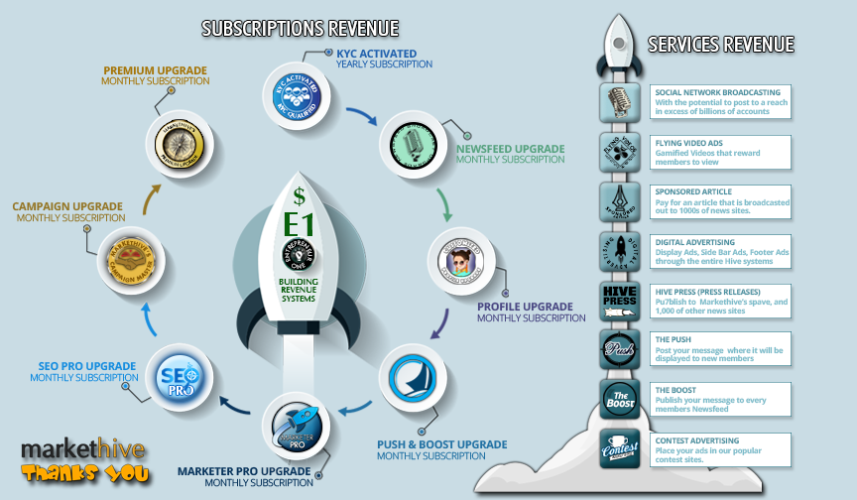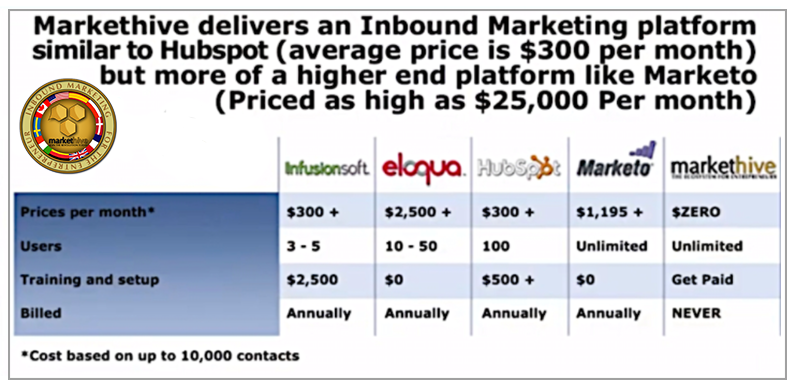The Secret to Perfectly Shaped Dumplings: A Game-Changer in Your Kitchen
There's something about homemade dumplings that just hits different, right? The way they melt in your mouth, bursting with flavor, whether they're filled with savory meat, veggies, or something sweet and unexpected.
But let's be honest, making dumplings by hand can be a bit of a hassle. If you've ever found yourself struggling with uneven folds, or worse, dumplings that fall apart while cooking, you're not alone.
The good news? There's a way to make your dumpling-making experience a whole lot easier and more enjoyable- dumplings maker.

Why Homemade Dumplings?
Before diving into the wonders of the dumpling maker kit, let's take a moment to appreciate homemade dumplings. They aren’t just food; they’re a love language.
Every pinch of the dough and spoonful of filling is a testament to care and tradition.
Homemade dumplings carry the essence of family recipes passed down through generations, capturing the flavors and memories of cultural heritage.
They offer a tactile, rewarding experience, transforming simple ingredients into a comforting, flavorful dish that can bring people together.

However, mastering the art of dumpling making can be a challenge. Achieving the perfect dough consistency, creating a balanced filling, and sealing the dumplings correctly require skill and practice.
This is where the magic of a how-to-make-homemade-dumplings tool comes in. It takes the guesswork out of the equation, offering step-by-step guidance and simplifying the process.
This tool helps you create consistently well-formed dumplings with ease, making the experience less about the struggle and more about enjoying the process and the results.
Making Dumplings Should Be Fun, Not Frustrating
Let’s be real—cooking should be fun, not a chore. If you’ve ever found yourself stressed out while making dumplings, you’re not alone. But cooking with the right tools can change everything.
A dumpling maker takes the hassle out of the process, so you can focus on what matters most: enjoying the experience and sharing delicious food with loved ones.
Not only does this tool save you time, but it also ensures that your dumplings look as good as they taste.
You’ll be able to impress your family and friends with your newfound dumpling-making skills, all thanks to this handy kitchen gadget.

If you’re ready to take your cooking game to the next level, it’s time to invest in a dumpling maker kit. This tool is more than just a kitchen gadget; it’s a gateway to a world of culinary possibilities.
Customer Spotlight: Jess's Journey with the Dumpling Maker
When considering whether a dumpling maker is worth adding to your kitchen arsenal, who better to hear from than Jess, a self-proclaimed "Dumpling Devotee" from Austin, Texas?
Jess gushes about her experience: “Oh, it’s a total game changer! I mean, who knew making dumplings could go from a flour-dusted kitchen catastrophe to a neat, tidy, and—dare I say—fun cooking session?
The first time I tried it, I thought it might end up in the pile of unused gadgets in my cupboard. But no way, it’s practically my new hobby!”
She laughs as she recalls her initial skepticism, “I was like, ‘Really? Just press and done?’ But it’s exactly that easy. And cleaning up is a breeze, too. My kids even join in, and for once, we’re not cleaning dough off the ceiling!”

Jess’s enthusiasm is infectious as she shares her favorite feature, “You can crank out a dozen dumplings in the time it used to take me to make one!
We’ve even started a little family competition on who can make the most creative filling. Last week, my youngest came up with a peanut butter and jelly dumpling. It was weirdly delicious!”
Her story is not just a testament to the product’s ease of use but also a glimpse into the joyful bonding it can bring into your home.
Jess says with a wink, “It’s like having a tiny, magical dough-pressing elf in my kitchen. Total lifesaver for parties or any regular Tuesday when you’re craving something yummy.”
Hearing from a real user like Jess not only highlights the practical benefits of the dumpling maker but also showcases the fun and creativity it can inspire in everyday cooking.
Dumplings Maker: Dumplings Are Just the Beginning
While dumplings are the star of the show, this versatile tool can do so much more. You can use it to make ravioli, empanadas, pierogies, and even mini hand pies. The possibilities are endless, and the results are always delicious.

Cooking should be an adventure, and with the how to make homemade dumplings, you’re equipped to explore new horizons.
Whether you’re cooking for a special occasion or just whipping up a quick dinner, this tool will help you create dishes that are sure to impress.
Why a Dumpling Maker is the Perfect Gift
A dumpling maker is a thoughtful and versatile gift that brings joy to any kitchen. Whether for a novice cook or an experienced chef, this handy tool opens the door to culinary creativity and cultural exploration.
Dumplings, a beloved dish across many cultures, offer endless possibilities for fillings, from savory meats and vegetables to sweet fruits and chocolates.
With a dumpling maker, the once intricate and time-consuming process of shaping and sealing dumplings becomes quick, easy, and consistent, allowing anyone to create perfectly shaped dumplings every time.

Gifting a dumpling maker is not just about the convenience it offers; it's about the experience it fosters. Making dumplings is a communal activity, often bringing family and friends together in a fun and interactive way.
It can turn an ordinary meal prep into an enjoyable event, encouraging bonding and shared creativity.
Furthermore, for those interested in international cuisine, a dumpling maker provides a gateway to explore various global traditions, from Chinese jiaozi and Japanese gyoza.
Your Kitchen Deserves the Best: Dumplings Maker
When it comes to kitchen tools, quality matters. You want something that’s not only effective but also durable and easy to use. The 2 in 1 Dumpling Maker checks all those boxes and more.
It’s designed to make your life easier, helping you create beautiful, delicious dumplings with minimal effort. So why settle for anything less?
If you’re passionate about cooking, or even if you’re just starting to explore the culinary world, this dumplings maker is a must-have. It’s an investment in your kitchen and in the joy of cooking.

Bring the Joy Back to Your Kitchen
Remember the excitement you felt the first time you tried a new recipe and it turned out amazing? That’s the kind of joy you can experience every time you use the dumpling maker kit.
It simplifies the process, letting you focus on the fun of creating and the pleasure of sharing delicious food with those you care about.
Cooking doesn’t have to be complicated or stressful. With the right tools, it can be a delightful, rewarding experience. So why not bring a little more joy into your kitchen?
Whether you’re a seasoned home cook or just getting started, the how to make homemade dumplings is here to help you create delicious, picture-perfect dumplings with ease.
Ready to give it a try? Your taste buds—and your family—will thank you.
Dumplings Maker: Your Essential Kitchen Tool
From experienced chefs to beginners in the kitchen, the dumpling maker kit is a hit because it removes the intimidation factor from a traditional culinary art.
It empowers you to experiment with flavors and dishes from different cultures, making the process of creating dumplings both accessible and enjoyable.

The ease of use allows for a wide range of creativity, enabling cooks to fill dumplings with everything from classic pork and cabbage to inventive combinations like spicy tofu and mushroom or even dessert fillings.
Moreover, it’s not just about the food; it’s about creating memories around the dinner table. The dumpling maker kit fosters a sense of togetherness as family and friends gather to assemble and cook the dumplings.
This shared experience encourages conversation, laughter, and bonding over the joy of making something delicious from scratch.
The satisfaction of presenting a plate of homemade dumplings, crafted with care and creativity, adds a special touch to any meal, turning an ordinary dinner into a memorable occasion.
There's something about homemade dumplings that just hits different, right? The way they melt in your mouth, bursting with flavor, whether they're filled with savory meat, veggies, or something sweet and unexpected.
But let's be honest, making dumplings by hand can be a bit of a hassle. If you've ever found yourself struggling with uneven folds, or worse, dumplings that fall apart while cooking, you're not alone.
The good news? There's a way to make your dumpling-making experience a whole lot easier and more enjoyable- dumplings maker.

Why Homemade Dumplings?
Before diving into the wonders of the dumpling maker kit, let's take a moment to appreciate homemade dumplings. They aren’t just food; they’re a love language.
Every pinch of the dough and spoonful of filling is a testament to care and tradition.
Homemade dumplings carry the essence of family recipes passed down through generations, capturing the flavors and memories of cultural heritage.
They offer a tactile, rewarding experience, transforming simple ingredients into a comforting, flavorful dish that can bring people together.

However, mastering the art of dumpling making can be a challenge. Achieving the perfect dough consistency, creating a balanced filling, and sealing the dumplings correctly require skill and practice.
This is where the magic of a how-to-make-homemade-dumplings tool comes in. It takes the guesswork out of the equation, offering step-by-step guidance and simplifying the process.
This tool helps you create consistently well-formed dumplings with ease, making the experience less about the struggle and more about enjoying the process and the results.
Making Dumplings Should Be Fun, Not Frustrating
Let’s be real—cooking should be fun, not a chore. If you’ve ever found yourself stressed out while making dumplings, you’re not alone. But cooking with the right tools can change everything.
A dumpling maker takes the hassle out of the process, so you can focus on what matters most: enjoying the experience and sharing delicious food with loved ones.
Not only does this tool save you time, but it also ensures that your dumplings look as good as they taste.
You’ll be able to impress your family and friends with your newfound dumpling-making skills, all thanks to this handy kitchen gadget.

If you’re ready to take your cooking game to the next level, it’s time to invest in a dumpling maker kit. This tool is more than just a kitchen gadget; it’s a gateway to a world of culinary possibilities.
Customer Spotlight: Jess's Journey with the Dumpling Maker
When considering whether a dumpling maker is worth adding to your kitchen arsenal, who better to hear from than Jess, a self-proclaimed "Dumpling Devotee" from Austin, Texas?
Jess gushes about her experience: “Oh, it’s a total game changer! I mean, who knew making dumplings could go from a flour-dusted kitchen catastrophe to a neat, tidy, and—dare I say—fun cooking session?
The first time I tried it, I thought it might end up in the pile of unused gadgets in my cupboard. But no way, it’s practically my new hobby!”
She laughs as she recalls her initial skepticism, “I was like, ‘Really? Just press and done?’ But it’s exactly that easy. And cleaning up is a breeze, too. My kids even join in, and for once, we’re not cleaning dough off the ceiling!”

Jess’s enthusiasm is infectious as she shares her favorite feature, “You can crank out a dozen dumplings in the time it used to take me to make one!
We’ve even started a little family competition on who can make the most creative filling. Last week, my youngest came up with a peanut butter and jelly dumpling. It was weirdly delicious!”
Her story is not just a testament to the product’s ease of use but also a glimpse into the joyful bonding it can bring into your home.
Jess says with a wink, “It’s like having a tiny, magical dough-pressing elf in my kitchen. Total lifesaver for parties or any regular Tuesday when you’re craving something yummy.”
Hearing from a real user like Jess not only highlights the practical benefits of the dumpling maker but also showcases the fun and creativity it can inspire in everyday cooking.
Dumplings Maker: Dumplings Are Just the Beginning
While dumplings are the star of the show, this versatile tool can do so much more. You can use it to make ravioli, empanadas, pierogies, and even mini hand pies. The possibilities are endless, and the results are always delicious.

Cooking should be an adventure, and with the how to make homemade dumplings, you’re equipped to explore new horizons.
Whether you’re cooking for a special occasion or just whipping up a quick dinner, this tool will help you create dishes that are sure to impress.
Why a Dumpling Maker is the Perfect Gift
A dumpling maker is a thoughtful and versatile gift that brings joy to any kitchen. Whether for a novice cook or an experienced chef, this handy tool opens the door to culinary creativity and cultural exploration.
Dumplings, a beloved dish across many cultures, offer endless possibilities for fillings, from savory meats and vegetables to sweet fruits and chocolates.
With a dumpling maker, the once intricate and time-consuming process of shaping and sealing dumplings becomes quick, easy, and consistent, allowing anyone to create perfectly shaped dumplings every time.

Gifting a dumpling maker is not just about the convenience it offers; it's about the experience it fosters. Making dumplings is a communal activity, often bringing family and friends together in a fun and interactive way.
It can turn an ordinary meal prep into an enjoyable event, encouraging bonding and shared creativity.
Furthermore, for those interested in international cuisine, a dumpling maker provides a gateway to explore various global traditions, from Chinese jiaozi and Japanese gyoza.
Your Kitchen Deserves the Best: Dumplings Maker
When it comes to kitchen tools, quality matters. You want something that’s not only effective but also durable and easy to use. The 2 in 1 Dumpling Maker checks all those boxes and more.
It’s designed to make your life easier, helping you create beautiful, delicious dumplings with minimal effort. So why settle for anything less?
If you’re passionate about cooking, or even if you’re just starting to explore the culinary world, this dumplings maker is a must-have. It’s an investment in your kitchen and in the joy of cooking.

Bring the Joy Back to Your Kitchen
Remember the excitement you felt the first time you tried a new recipe and it turned out amazing? That’s the kind of joy you can experience every time you use the dumpling maker kit.
It simplifies the process, letting you focus on the fun of creating and the pleasure of sharing delicious food with those you care about.
Cooking doesn’t have to be complicated or stressful. With the right tools, it can be a delightful, rewarding experience. So why not bring a little more joy into your kitchen?
Whether you’re a seasoned home cook or just getting started, the how to make homemade dumplings is here to help you create delicious, picture-perfect dumplings with ease.
Ready to give it a try? Your taste buds—and your family—will thank you.
Dumplings Maker: Your Essential Kitchen Tool
From experienced chefs to beginners in the kitchen, the dumpling maker kit is a hit because it removes the intimidation factor from a traditional culinary art.
It empowers you to experiment with flavors and dishes from different cultures, making the process of creating dumplings both accessible and enjoyable.

The ease of use allows for a wide range of creativity, enabling cooks to fill dumplings with everything from classic pork and cabbage to inventive combinations like spicy tofu and mushroom or even dessert fillings.
Moreover, it’s not just about the food; it’s about creating memories around the dinner table. The dumpling maker kit fosters a sense of togetherness as family and friends gather to assemble and cook the dumplings.
This shared experience encourages conversation, laughter, and bonding over the joy of making something delicious from scratch.
The satisfaction of presenting a plate of homemade dumplings, crafted with care and creativity, adds a special touch to any meal, turning an ordinary dinner into a memorable occasion.
There's something about homemade dumplings that just hits different, right? The way they melt in your mouth, bursting with flavor, whether they're filled with savory meat, veggies, or something sweet and unexpected.
But let's be honest, making dumplings by hand can be a bit of a hassle. If you've ever found yourself struggling with uneven folds, or worse, dumplings that fall apart while cooking, you're not alone.
The good news? There's a way to make your dumpling-making experience a whole lot easier and more enjoyable- dumplings maker.

Why Homemade Dumplings?
Before diving into the wonders of the dumpling maker kit, let's take a moment to appreciate homemade dumplings. They aren’t just food; they’re a love language.
Every pinch of the dough and spoonful of filling is a testament to care and tradition.
Homemade dumplings carry the essence of family recipes passed down through generations, capturing the flavors and memories of cultural heritage.
They offer a tactile, rewarding experience, transforming simple ingredients into a comforting, flavorful dish that can bring people together.

However, mastering the art of dumpling making can be a challenge. Achieving the perfect dough consistency, creating a balanced filling, and sealing the dumplings correctly require skill and practice.
This is where the magic of a how-to-make-homemade-dumplings tool comes in. It takes the guesswork out of the equation, offering step-by-step guidance and simplifying the process.
This tool helps you create consistently well-formed dumplings with ease, making the experience less about the struggle and more about enjoying the process and the results.
Making Dumplings Should Be Fun, Not Frustrating
Let’s be real—cooking should be fun, not a chore. If you’ve ever found yourself stressed out while making dumplings, you’re not alone. But cooking with the right tools can change everything.
A dumpling maker takes the hassle out of the process, so you can focus on what matters most: enjoying the experience and sharing delicious food with loved ones.
Not only does this tool save you time, but it also ensures that your dumplings look as good as they taste.
You’ll be able to impress your family and friends with your newfound dumpling-making skills, all thanks to this handy kitchen gadget.

If you’re ready to take your cooking game to the next level, it’s time to invest in a dumpling maker kit. This tool is more than just a kitchen gadget; it’s a gateway to a world of culinary possibilities.
Customer Spotlight: Jess's Journey with the Dumpling Maker
When considering whether a dumpling maker is worth adding to your kitchen arsenal, who better to hear from than Jess, a self-proclaimed "Dumpling Devotee" from Austin, Texas?
Jess gushes about her experience: “Oh, it’s a total game changer! I mean, who knew making dumplings could go from a flour-dusted kitchen catastrophe to a neat, tidy, and—dare I say—fun cooking session?
The first time I tried it, I thought it might end up in the pile of unused gadgets in my cupboard. But no way, it’s practically my new hobby!”
She laughs as she recalls her initial skepticism, “I was like, ‘Really? Just press and done?’ But it’s exactly that easy. And cleaning up is a breeze, too. My kids even join in, and for once, we’re not cleaning dough off the ceiling!”

Jess’s enthusiasm is infectious as she shares her favorite feature, “You can crank out a dozen dumplings in the time it used to take me to make one!
We’ve even started a little family competition on who can make the most creative filling. Last week, my youngest came up with a peanut butter and jelly dumpling. It was weirdly delicious!”
Her story is not just a testament to the product’s ease of use but also a glimpse into the joyful bonding it can bring into your home.
Jess says with a wink, “It’s like having a tiny, magical dough-pressing elf in my kitchen. Total lifesaver for parties or any regular Tuesday when you’re craving something yummy.”
Hearing from a real user like Jess not only highlights the practical benefits of the dumpling maker but also showcases the fun and creativity it can inspire in everyday cooking.
Dumplings Maker: Dumplings Are Just the Beginning
While dumplings are the star of the show, this versatile tool can do so much more. You can use it to make ravioli, empanadas, pierogies, and even mini hand pies. The possibilities are endless, and the results are always delicious.

Cooking should be an adventure, and with the how to make homemade dumplings, you’re equipped to explore new horizons.
Whether you’re cooking for a special occasion or just whipping up a quick dinner, this tool will help you create dishes that are sure to impress.
Why a Dumpling Maker is the Perfect Gift
A dumpling maker is a thoughtful and versatile gift that brings joy to any kitchen. Whether for a novice cook or an experienced chef, this handy tool opens the door to culinary creativity and cultural exploration.
Dumplings, a beloved dish across many cultures, offer endless possibilities for fillings, from savory meats and vegetables to sweet fruits and chocolates.
With a dumpling maker, the once intricate and time-consuming process of shaping and sealing dumplings becomes quick, easy, and consistent, allowing anyone to create perfectly shaped dumplings every time.

Gifting a dumpling maker is not just about the convenience it offers; it's about the experience it fosters. Making dumplings is a communal activity, often bringing family and friends together in a fun and interactive way.
It can turn an ordinary meal prep into an enjoyable event, encouraging bonding and shared creativity.
Furthermore, for those interested in international cuisine, a dumpling maker provides a gateway to explore various global traditions, from Chinese jiaozi and Japanese gyoza.
Your Kitchen Deserves the Best: Dumplings Maker
When it comes to kitchen tools, quality matters. You want something that’s not only effective but also durable and easy to use. The 2 in 1 Dumpling Maker checks all those boxes and more.
It’s designed to make your life easier, helping you create beautiful, delicious dumplings with minimal effort. So why settle for anything less?
If you’re passionate about cooking, or even if you’re just starting to explore the culinary world, this dumplings maker is a must-have. It’s an investment in your kitchen and in the joy of cooking.

Bring the Joy Back to Your Kitchen
Remember the excitement you felt the first time you tried a new recipe and it turned out amazing? That’s the kind of joy you can experience every time you use the dumpling maker kit.
It simplifies the process, letting you focus on the fun of creating and the pleasure of sharing delicious food with those you care about.
Cooking doesn’t have to be complicated or stressful. With the right tools, it can be a delightful, rewarding experience. So why not bring a little more joy into your kitchen?
Whether you’re a seasoned home cook or just getting started, the how to make homemade dumplings is here to help you create delicious, picture-perfect dumplings with ease.
Ready to give it a try? Your taste buds—and your family—will thank you.
Dumplings Maker: Your Essential Kitchen Tool
From experienced chefs to beginners in the kitchen, the dumpling maker kit is a hit because it removes the intimidation factor from a traditional culinary art.
It empowers you to experiment with flavors and dishes from different cultures, making the process of creating dumplings both accessible and enjoyable.

The ease of use allows for a wide range of creativity, enabling cooks to fill dumplings with everything from classic pork and cabbage to inventive combinations like spicy tofu and mushroom or even dessert fillings.
Moreover, it’s not just about the food; it’s about creating memories around the dinner table. The dumpling maker kit fosters a sense of togetherness as family and friends gather to assemble and cook the dumplings.
This shared experience encourages conversation, laughter, and bonding over the joy of making something delicious from scratch.
The satisfaction of presenting a plate of homemade dumplings, crafted with care and creativity, adds a special touch to any meal, turning an ordinary dinner into a memorable occasion.
There's something about homemade dumplings that just hits different, right? The way they melt in your mouth, bursting with flavor, whether they're filled with savory meat, veggies, or something sweet and unexpected.
But let's be honest, making dumplings by hand can be a bit of a hassle. If you've ever found yourself struggling with uneven folds, or worse, dumplings that fall apart while cooking, you're not alone.
The good news? There's a way to make your dumpling-making experience a whole lot easier and more enjoyable- dumplings maker.

Why Homemade Dumplings?
Before diving into the wonders of the dumpling maker kit, let's take a moment to appreciate homemade dumplings. They aren’t just food; they’re a love language.
Every pinch of the dough and spoonful of filling is a testament to care and tradition.
Homemade dumplings carry the essence of family recipes passed down through generations, capturing the flavors and memories of cultural heritage.
They offer a tactile, rewarding experience, transforming simple ingredients into a comforting, flavorful dish that can bring people together.

However, mastering the art of dumpling making can be a challenge. Achieving the perfect dough consistency, creating a balanced filling, and sealing the dumplings correctly require skill and practice.
This is where the magic of a how-to-make-homemade-dumplings tool comes in. It takes the guesswork out of the equation, offering step-by-step guidance and simplifying the process.
This tool helps you create consistently well-formed dumplings with ease, making the experience less about the struggle and more about enjoying the process and the results.
Making Dumplings Should Be Fun, Not Frustrating
Let’s be real—cooking should be fun, not a chore. If you’ve ever found yourself stressed out while making dumplings, you’re not alone. But cooking with the right tools can change everything.
A dumpling maker takes the hassle out of the process, so you can focus on what matters most: enjoying the experience and sharing delicious food with loved ones.
Not only does this tool save you time, but it also ensures that your dumplings look as good as they taste.
You’ll be able to impress your family and friends with your newfound dumpling-making skills, all thanks to this handy kitchen gadget.

If you’re ready to take your cooking game to the next level, it’s time to invest in a dumpling maker kit. This tool is more than just a kitchen gadget; it’s a gateway to a world of culinary possibilities.
Customer Spotlight: Jess's Journey with the Dumpling Maker
When considering whether a dumpling maker is worth adding to your kitchen arsenal, who better to hear from than Jess, a self-proclaimed "Dumpling Devotee" from Austin, Texas?
Jess gushes about her experience: “Oh, it’s a total game changer! I mean, who knew making dumplings could go from a flour-dusted kitchen catastrophe to a neat, tidy, and—dare I say—fun cooking session?
The first time I tried it, I thought it might end up in the pile of unused gadgets in my cupboard. But no way, it’s practically my new hobby!”
She laughs as she recalls her initial skepticism, “I was like, ‘Really? Just press and done?’ But it’s exactly that easy. And cleaning up is a breeze, too. My kids even join in, and for once, we’re not cleaning dough off the ceiling!”

Jess’s enthusiasm is infectious as she shares her favorite feature, “You can crank out a dozen dumplings in the time it used to take me to make one!
We’ve even started a little family competition on who can make the most creative filling. Last week, my youngest came up with a peanut butter and jelly dumpling. It was weirdly delicious!”
Her story is not just a testament to the product’s ease of use but also a glimpse into the joyful bonding it can bring into your home.
Jess says with a wink, “It’s like having a tiny, magical dough-pressing elf in my kitchen. Total lifesaver for parties or any regular Tuesday when you’re craving something yummy.”
Hearing from a real user like Jess not only highlights the practical benefits of the dumpling maker but also showcases the fun and creativity it can inspire in everyday cooking.
Dumplings Maker: Dumplings Are Just the Beginning
While dumplings are the star of the show, this versatile tool can do so much more. You can use it to make ravioli, empanadas, pierogies, and even mini hand pies. The possibilities are endless, and the results are always delicious.

Cooking should be an adventure, and with the how to make homemade dumplings, you’re equipped to explore new horizons.
Whether you’re cooking for a special occasion or just whipping up a quick dinner, this tool will help you create dishes that are sure to impress.
Why a Dumpling Maker is the Perfect Gift
A dumpling maker is a thoughtful and versatile gift that brings joy to any kitchen. Whether for a novice cook or an experienced chef, this handy tool opens the door to culinary creativity and cultural exploration.
Dumplings, a beloved dish across many cultures, offer endless possibilities for fillings, from savory meats and vegetables to sweet fruits and chocolates.
With a dumpling maker, the once intricate and time-consuming process of shaping and sealing dumplings becomes quick, easy, and consistent, allowing anyone to create perfectly shaped dumplings every time.

Gifting a dumpling maker is not just about the convenience it offers; it's about the experience it fosters. Making dumplings is a communal activity, often bringing family and friends together in a fun and interactive way.
It can turn an ordinary meal prep into an enjoyable event, encouraging bonding and shared creativity.
Furthermore, for those interested in international cuisine, a dumpling maker provides a gateway to explore various global traditions, from Chinese jiaozi and Japanese gyoza.
Your Kitchen Deserves the Best: Dumplings Maker
When it comes to kitchen tools, quality matters. You want something that’s not only effective but also durable and easy to use. The 2 in 1 Dumpling Maker checks all those boxes and more.
It’s designed to make your life easier, helping you create beautiful, delicious dumplings with minimal effort. So why settle for anything less?
If you’re passionate about cooking, or even if you’re just starting to explore the culinary world, this dumplings maker is a must-have. It’s an investment in your kitchen and in the joy of cooking.

Bring the Joy Back to Your Kitchen
Remember the excitement you felt the first time you tried a new recipe and it turned out amazing? That’s the kind of joy you can experience every time you use the dumpling maker kit.
It simplifies the process, letting you focus on the fun of creating and the pleasure of sharing delicious food with those you care about.
Cooking doesn’t have to be complicated or stressful. With the right tools, it can be a delightful, rewarding experience. So why not bring a little more joy into your kitchen?
Whether you’re a seasoned home cook or just getting started, the how to make homemade dumplings is here to help you create delicious, picture-perfect dumplings with ease.
Ready to give it a try? Your taste buds—and your family—will thank you.
Dumplings Maker: Your Essential Kitchen Tool
From experienced chefs to beginners in the kitchen, the dumpling maker kit is a hit because it removes the intimidation factor from a traditional culinary art.
It empowers you to experiment with flavors and dishes from different cultures, making the process of creating dumplings both accessible and enjoyable.

The ease of use allows for a wide range of creativity, enabling cooks to fill dumplings with everything from classic pork and cabbage to inventive combinations like spicy tofu and mushroom or even dessert fillings.
Moreover, it’s not just about the food; it’s about creating memories around the dinner table. The dumpling maker kit fosters a sense of togetherness as family and friends gather to assemble and cook the dumplings.
This shared experience encourages conversation, laughter, and bonding over the joy of making something delicious from scratch.
The satisfaction of presenting a plate of homemade dumplings, crafted with care and creativity, adds a special touch to any meal, turning an ordinary dinner into a memorable occasion.
Tim Moseley

.jpg)













.png)



























.png)











.png)